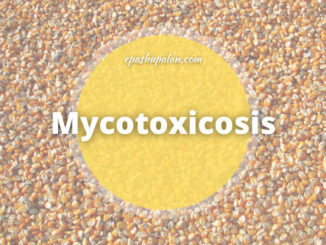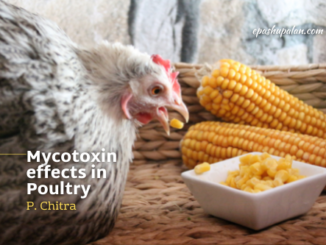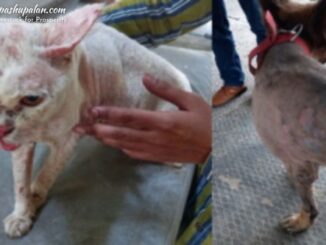Introduction
The incidence of fungal infections has been increasing over the past decades. Global mortality owing to fungal infections is greater than for malaria and breast cancer and is equivalent to that for tuberculosis (TB) and HIV. Fungal pathogens remain a significant clinical challenge where better therapeutic interventions are clearly needed. Therefore it is important to understand the immunopathology of fungal infections in order to be able to consider the opportunities for augmentative immunomodulatory treatments.
Innate Response
Innate receptors mediate a crucial function in the elicitation of direct antifungal mediators by innate cells as well as coordinate the activation of adaptive immunity. Fungal β-1,3-glucan is the most immunologically active fungal pathogen associated molecular pattern (PAMP), and the full immune response to a fungus does not occur until β-1,3-glucan in the inner cell wall is exposed. Chitin of C. albicans, other fungi and invertebrates induced particle size-dependent immune responses from myeloid cells.
Two main families of innate receptors have been clearly shown to be involved in fungal recognition, TLR and C-type lectins.
- TLRs 1- 4, 6, 7 and 9 have been found to recognize a variety of fungal pathogens.
- The CLR dectin-1 recognizes 1–3 β-glucans present in the cell wall of most fungi and was the first non-TLR innate receptor to be shown to link innate and adaptive immunity. Dectin-1 also induces phagocytosis and the production of reactive oxygen species (ROS) by NADPH oxidase. NADPH-dependent production of ROS is a crucial factor in containment of fungal pathogens as mice and humans defective in components of the NADPH complex display significant susceptibility to fungal infection. Dectin-3 is also known as Clec4e as a crucial mediator of TDM recognition as well as an important factor in host defence against fungal infection. It can promote innate cell activation and cytokine secretion via syk signaling.
Innate Cells
Macrophages and neutrophils provide first-line defences killing fungal invaders by attacking fungal cells with variety of enzymes and toxic oxidative and nitrosative compounds. NK cells, iNKT cells and various dendritic cell subsets have also been found to be protective against fungal pathogens. The mechanisms of innate-mediated pathogen eradication are diverse and include contributions by secreted factors such as pentraxin-3 and complement. The generation of ROS appears to be of particular significance in the fight against fungal pathogens as patients with defects in its generation.
In addition, neutrophils can produce a variety of proteases such as elastase and cathepsins as well as extracellular traps (NETs) that can contribute to fungal containment. NETs are composed of DNA, a variety of enzymes and antimicrobial peptides with antifungal activity. In response to Candida infection, calprotectin was found in NETs, and calprotectin-negative NETs were ineffective in killing of Candida, thus suggesting their antifungal effects. Nitric oxide (NO) is produced by a variety of innate cells and has been found to be protective against intracellular bacteria especially against mycobacteria tuberculosis. It can be effective against Candida in vitro and contributes to priming of protective CD8 T cells during Histoplasma infection, thus suggesting a protective function of NO against at least some fungal pathogens.
Cytokine Production
These immune cells also produce cytokines which are associated with a Th1 response and include TNF-a, IFNc,IL-12 and GM-CSF. IL-12 is required for the development of Th1 responses and IFN-c production.
IFN-c in turn acts on innate cells to enhance their antifungal activities. GM-CSF and TNF can act on neutrophils and other innate cells to augment phagocytosis and killing. The use of anti-TNF therapy is of particular concern to patients residing in endemic regions for dimorphic fungi where a significant increase in the incidence of these infections has been reported. Novel subset of T cells termed Th17 cells- IL-17A, IL-17F and IL-22 were originally identified as products of Th17 CD4 T cells but have more recently been shown to be produced by innate cells such as iNKT cells and neutrophils . A protective function for these cytokines against fungal pathogens, especially against Candida, has been shown in models of infectious disease as well as based on clinical observations in patient populations. The mechanism of IL-17- mediated protection is due at least in part to enhanced recruitment of neutrophils.
Adaptive Immunity
Dendritic cells are essential for the initiation of adaptive immunity. It directs the maturation of naive CD4 T- helper cells (TH) and regulatory T cell (TReg) populations, leading to both protective and sometimes pathological inflammatory reactions to the presence of a fungus. The significant contributions of CD4 T-cells to defence against fungal pathogens are clearly illustrated by the susceptibility of patients with AIDS to fungal infections with Cryptococcus, Pneumocystis and Histoplasma among others. Protection by adaptive immunity is thought of as primarily mediated by CD4 T- cells, various studies clearly show that CD8 T- cells and antibodies can be protective against fungal pathogens. In the absence of CD4 T- cells, CD8 T- cells protect against B. dermatitidis. CD8 T-cell responses are elicited against H. capsulatum and can be protective especially in the absence of CD4 T-cells. Recent studies also describe that CD8 T- cells are part of the immune response generated to A. fumigatus and that they can contribute to vaccine-dependent protection. The importance of antibodies has been best demonstrated in the context of Cryptococcus infection where antibodies can be protective via a combination of both direct and indirect mechanisms. Similar to the concept of cross-protective CD4 T-cell responses, proof of principle studies have shown the possibility of developing antibody-based vaccines with broad protection against fungal pathogens. There is thus promise for the future development of vaccine strategies that target multiple fungi via both cellular and humoral mechanisms of protection.
Inspite of all these immune responses pathogenic fungi use a repertoire of host immune system evasion strategies. After entering the host, these pathogens overcome the immune system allowing their survival, colonization and spread to different sites. Fungi have evolved various sophisticated strategies to avoid host defense mechanisms to maximize their survival in the host and these are:
1. Stealth: The fungi may use different mechanisms to hide/prevent recognition by host innate immune system:
- Dimorphism: The pathogens may camouflage themselves. This is achieved by modification of chitin and β-glucan to reduce the level of host perception. O-mannan masks the β-glucan in C. albicans yeast cells and contributes to blocking recognition by Dectin-1.
- Biofilm: Certain fungi have the ability to form a biofilm which are microbial communities attached to surfaces and held together by extracellular matrix. Growth in mass increases resistance to environmental stress, antifungals and also effectively shields them from attack by phagocytes.
- Capsule: Cryptococcus neoformans has a capsule which masks recognition of the underlying cell wall mannan and β-(1, 3)-glucan. Although the capsule protects it from recognition by phagocytic receptors, but it is not entirely transparent to the innate immune system and is recognized by TLRs to triggers an inflammatory response.
- Melanin: It is a complex amorphous polymerized phenolic compound found in the inner cell wall of a wide range of dimorphic fungi. Melanin-deficient fungi have attenuated virulence due to reduced ability to block immune recognition. The green fungal conidial pigment dihydroxynaphthalene-melanin (DHN-melanin) present in A. fumigatus hinders phagocytosis and conidium binding to host proteins such as fibronectin.
2. Control: Stealth is not always possible and the fungal pathogens will eventually be recognized by the immune system. So pathogens find other ways to take advantage of host recognition system and control them by exhibiting on their surface or secreting molecules.
Complement evasion: Achieved by various mechanisms described below:-
- In C. albicans :- Phospho glycerate mutase (Gmp1), pH-regulated antigen1(Pra1) and Glycerol-3-phosphate dehydrogenase 2 (Gpd2) are secreted on its surface which interacts with Factor H (FH) and Factor H-like protein 1 (FHL1) and plasminogen. It also secretes the aspartic proteases (Saps) Sap1, Sap2, and Sap3, which degrades and inactivates the complement proteins C3b, C4b, and C5. It may also express an integrin called avb3 that acquires vitronectin to inhibit TCC formation.
- In Aspergillus spp.:- bind the complement inhibitors FH, FHL1, and C4BP and produce enzymes like Alp1 having broad proteolytic activity against the complement components C3, C4b, C5, and C1q. They also use pigments on their conidial surface masking C3 binding sites to avoid opsonization and complement attack. Moreover it also synthesizes a complement inhibitor (CI) which selectively inhibits the alternative pathway of complement.
- Blastomyces adhesion 1 (BAD1) factor in Blastomyces dermatitidis occupies C3 sites on cell wall glucans to avoid C3 deposition.
3. Escaping from phagocytic process: Once fungal pathogen reaches host, professional phagocytes (neutrophils, macrophages and dendritic cells) eliminate it to control infection. The morphology and size of the pathogen are important as fungi can change morphology during different stages of infection in response to the host temperature and for dissemination. If pathogen is larger than the phagocyte, phagocytosis may be compromised.
4. They can also manipulate phagosome maturation by blocking phagosomal acidification, or by escaping from the phagosome. Some pathogenic fungi like C. neoformans, C. albicans, and C. krusei, in which the fungus is cast out of the macrophage without lysis of the host cell. This non-lytic escape confers advantages to the pathogen by decreasing proinflammatory signals.
5. When the pathogen cannot avoid or control the host defense mechanisms, the last resort is to destroy the defense by expressing or secreting molecules that harm or counter attack the immune defense. This is done by scavenging oxidative mechanisms and non-oxidative mechanisms.
Certain genes like YHB1 (flavohemoglobin) are expressed to combat RNS stress and proteins like Porphobilinogen deaminase hem C, NO-inducible nitrosothione in ntp A and S-nitrosoglutathione (GSNO) reductase help in detoxification of RNS in C.albicans, C.neoformans and A.fumigatus.






Be the first to comment